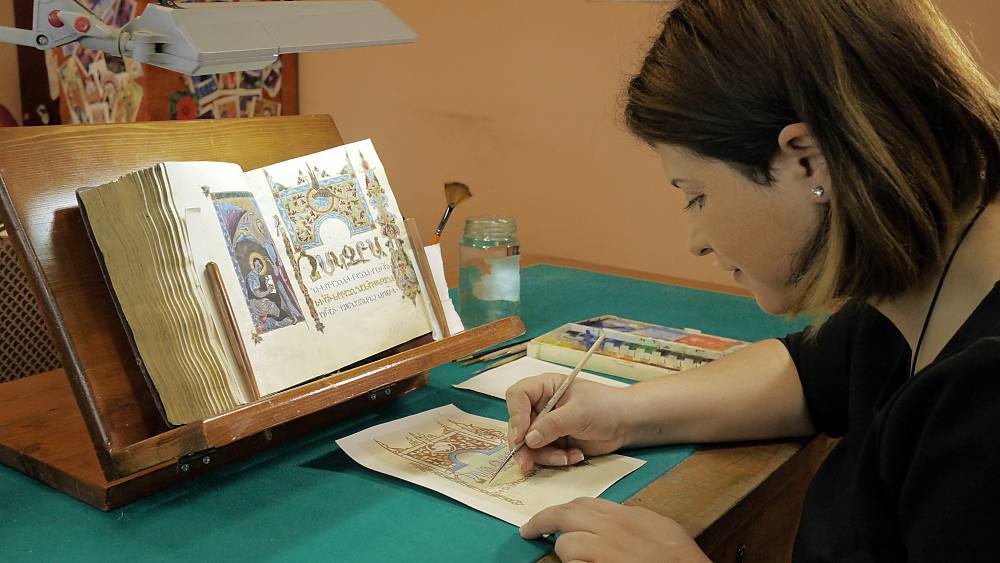Armenian letter art and its cultural expressions constitutes the centuries-old art of Armenian letters, Armenian scripts, the rich culture of decorating letters and its various uses. The element is based on the Armenian alphabet created in 405 AD by Mesrop Mashtots, following the ‘one-letter-for-one-sound’ principle. The element is also distinguished by its wide range of ornamental scripts, generally classified by their shapes; knots, birds, animals, people, and mythical or imaginary creatures. Since their invention, Armenian letters have not only served their primary function to create written heritage, but also as numbers, cryptographs, riddles etc. Today, the letters are also used in handicrafts. Armenian letter art has penetrated almost all layers of society, particularly folk art. The element is practised across the Armenian territory and is integral to the cultural identity of Armenian people. Its bearers and practitioners include artists, carpet weavers, embroiderers, sculptors, linguists, calligraphists, jewellers and others. Educational institutions at all levels are involved in transmitting the related knowledge and skills to future generations, and several youth centres accord great importance to teaching Armenian letter art. Since 2008, continuous support has been shown for the annual ‘Granshan’ international design competition, and the Armenian Apostolic Church is central to acquainting children and youngsters with the element.













